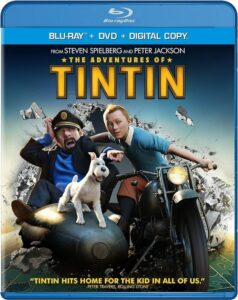لغات آیلتس موضوع پرورش حیوانات
IELTS Vocabulary on Animal husbandry
پرورش حیوانات یکی از موضوعات مهمی است که میتواند در آزمون آیلتس مطرح شود، به ویژه در بخشهای اسپیکینگ و رایتینگ. دانستن واژگان کلیدی مرتبط با این موضوع به شما کمک میکند تا با اطمینان بیشتر و دقت بیشتری درباره این موضوعات صحبت کنید یا بنویسید. در این مقاله، به بررسی 20 نمونه از لغات کلیدی مرتبط با موضوع پرورش حیوانات میپردازیم که به شما در آزمون آیلتس کمک خواهد کرد. دانلود PDF جزوه های ایده پردازی رایتینگ آیلتس پیشنهاد بعدی ما به شما عزیزان است.
1. واژگان و لغات کلیدی آیلتس در موضوع پرورش حیوانات
در این بخش، به معرفی 20 مورد از لغات کلیدی مرتبط با پرورش حیوانات میپردازیم که در بخشهای مختلف آزمون آیلتس به شما کمک میکنند.
- Animal Husbandry
- پرورش حیوانات
- Animal husbandry involves the breeding and care of farm animals.
- پرورش حیوانات شامل تکثیر و مراقبت از حیوانات مزرعه است.
- Livestock
- دام
- Livestock such as cattle and sheep are raised for meat and wool.
- دامهایی مانند گاو و گوسفند برای گوشت و پشم پرورش داده میشوند.
- Poultry
- طیور
- Poultry farming is a common practice for producing eggs and meat.
- پرورش طیور یک روش رایج برای تولید تخممرغ و گوشت است.
- Breeding
- تولیدمثل
- Selective breeding is used to improve the quality of farm animals.
- تولیدمثل انتخابی برای بهبود کیفیت دامها استفاده میشود.
- Dairy Farming
- دامداری شیری
- Dairy farming is focused on producing milk and dairy products.
- دامداری شیری بر تولید شیر و محصولات لبنی متمرکز است.
- Cattle
- گاو
- Cattle are commonly raised for their meat and milk.
- گاوها معمولاً برای گوشت و شیرشان پرورش داده میشوند.
- Sustainable Farming
- کشاورزی پایدار
- Sustainable farming practices ensure long-term productivity without harming the environment.
- روشهای کشاورزی پایدار تضمین میکند که تولید طولانیمدت بدون آسیب به محیط زیست انجام میشود.
- Free-range
- آزاد
- Free-range chickens have access to outdoor areas and are not confined to cages.
- مرغهای آزاد به مناطق باز دسترسی دارند و در قفس محبوس نمیشوند.
- Organic Farming
- کشاورزی ارگانیک
- Organic farming avoids the use of synthetic chemicals and focuses on natural processes.
- کشاورزی ارگانیک از مواد شیمیایی مصنوعی استفاده نمیکند و بر فرآیندهای طبیعی تمرکز دارد.
- Animal Welfare
- رفاه حیوانات
- Ensuring animal welfare is essential in the practice of responsible animal husbandry.
- تضمین رفاه حیوانات در پرورش حیوانات مسئولانه ضروری است.
- Feedlot
- محل تغذیه صنعتی
- A feedlot is a confined area where livestock are fed and fattened for slaughter.
- محل تغذیه صنعتی منطقهای محصور است که در آن دامها برای ذبح تغذیه و چاق میشوند.
- Pasture
- مرتع
- Animals raised on pasture tend to be healthier and more resilient.
- حیواناتی که در مرتع پرورش مییابند معمولاً سالمتر و مقاومتر هستند.
- Vaccination
- واکسیناسیون
- Regular vaccination helps prevent disease outbreaks in livestock populations.
- واکسیناسیون منظم به پیشگیری از شیوع بیماری در جمعیت دامها کمک میکند.
- Animal Feed
- خوراک دام
- The quality of animal feed directly affects the growth and health of livestock.
- کیفیت خوراک دام مستقیماً بر رشد و سلامت دام تأثیر میگذارد.
- Artificial Insemination
- تلقیح مصنوعی
- Artificial insemination is used to improve genetic diversity in animal breeding.
- تلقیح مصنوعی برای بهبود تنوع ژنتیکی در تولید مثل حیوانات استفاده میشود.
- Hatchery
- مرکز جوجهکشی
- A hatchery is where eggs are incubated and hatched, commonly used in poultry farming.
- مرکز جوجهکشی جایی است که تخمها انکوباسیون و جوجهکشی میشوند، که معمولاً در پرورش طیور استفاده میشود.
- Veterinary Care
- مراقبتهای دامپزشکی
- Veterinary care is crucial for maintaining the health of farm animals.
- مراقبتهای دامپزشکی برای حفظ سلامت حیوانات مزرعه حیاتی است.
- Shearing
- پشمچینی
- Shearing is the process of removing wool from sheep.
- پشمچینی فرآیند برداشتن پشم از گوسفندان است.
- Fodder
- علوفه
- Farmers grow fodder crops such as corn and hay to feed their livestock.
- کشاورزان علوفهای مانند ذرت و یونجه برای تغذیه دام خود پرورش میدهند.
- Animal By-products
- محصولات جانبی حیوانی
- Animal by-products include items like leather and gelatin, produced alongside meat.
- محصولات جانبی حیوانی شامل مواردی مانند چرم و ژلاتین است که همراه با گوشت تولید میشوند.
2. نکات کاربردی برای استفاده از واژگان در رایتینگ و اسپیکینگ آیلتس
نکته 1: استفاده از واژگان در رایتینگ
برای بخش رایتینگ، میتوانید از این واژگان برای توصیف مسائل مربوط به پرورش حیوانات استفاده کنید:
- Sustainable farming practices should be encouraged to ensure that animal welfare is prioritized, while still meeting the demand for livestock products.
نکته 2: استفاده از لغات آیلتس موضوع پرورش حیوانات در اسپیکینگ
در بخش اسپیکینگ، میتوانید تجربیات خود در مورد پرورش حیوانات یا نظرات خود درباره تأثیرات زیستمحیطی این صنعت را بیان کنید:
- I believe that free-range farming is much better for animal welfare compared to industrial feedlots where animals are often confined in small spaces.
3. سوالات پرتکرار اسپیکینگ آیلتس در موضوع پرورش حیوانات
- What are the benefits of free-range farming?
- Free-range farming provides better living conditions for animals and often leads to higher-quality products. Animals are allowed to roam freely, which contributes to their overall health and well-being.
- پرورش آزاد شرایط بهتری برای حیوانات فراهم میکند و منجر به تولید محصولات با کیفیتتر میشود.
- How important is animal welfare in farming practices?
- Animal welfare is essential in modern farming practices. Not only does it ensure the ethical treatment of animals, but it also leads to healthier and more productive livestock. Consumers are also becoming more concerned about how animals are treated on farms.
- رفاه حیوانات در روشهای کشاورزی مدرن بسیار مهم است.
- What challenges do farmers face in raising livestock sustainably?
- Farmers face challenges such as balancing sustainable farming practices with the need to produce food at scale. Rising costs, climate change, and maintaining animal welfare are all significant obstacles that they must navigate.
- کشاورزان با چالشهایی مانند توازن بین روشهای کشاورزی پایدار و نیاز به تولید مواد غذایی در مقیاس بزرگ مواجه هستند.
4. نمونه رایتینگ تسک 2 آیلتس درباره موضوع پرورش حیوانات
Question: The demand for meat and dairy products is increasing, but this is causing environmental and ethical concerns. Discuss both the advantages and disadvantages of animal farming, and give your opinion.
Animal farming has been an essential industry for meeting the world’s demand for meat and dairy products. However, as the demand for these products continues to grow, concerns regarding the environmental and ethical implications of animal farming have also intensified. While livestock farming provides essential nutrition and economic benefits, it is crucial to weigh these advantages against the potential negative consequences. In this essay, I will discuss both the advantages and disadvantages of animal farming and offer my opinion on how these issues can be addressed.
On the one hand, animal farming plays a vital role in providing essential sources of protein, such as meat, milk, and eggs, which are important for human health. Dairy farming and poultry farming also contribute significantly to the economy, providing jobs and livelihoods for millions of people worldwide. In rural areas, many communities rely on livestock for their income, as well as for producing animal by-products such as wool, leather, and gelatin. Additionally, selective breeding and modern farming practices have improved the quality of livestock, resulting in higher yields and more efficient food production.
Another advantage of animal farming is its contribution to food security. With the global population continuously growing, ensuring that people have access to adequate nutrition is essential. Animal husbandry provides a reliable source of food, helping to meet this increasing demand. Furthermore, advancements in sustainable farming practices have made it possible to reduce the environmental impact of animal farming, through techniques such as pasture-based systems and organic farming that prioritize animal welfare and minimize the use of harmful chemicals.
On the other hand, animal farming presents significant environmental challenges. The large-scale farming of livestock is a leading contributor to greenhouse gas emissions, particularly methane, which is released by cattle during digestion. Moreover, the need for vast amounts of water and land to support livestock farming can lead to deforestation, loss of biodiversity, and depletion of natural resources. These environmental impacts make it difficult to justify industrial farming practices, especially in light of climate change.
Ethical concerns regarding animal welfare are another disadvantage of animal farming. In many industrial feedlots, animals are confined to small, crowded spaces with limited access to the outdoors. These conditions often lead to stress, disease, and poor-quality lives for the animals. Additionally, the use of artificial insemination and other intensive breeding practices raises questions about the treatment of animals and the morality of using them solely for human consumption. Consumers are becoming increasingly aware of these ethical issues, leading to a growing demand for free-range and organic farming practices that prioritize the well-being of animals.
In my opinion, while animal farming is essential for providing food and supporting economies, it must be done in a way that balances productivity with ethical and environmental considerations. Sustainable farming practices, such as free-range and organic systems, should be encouraged to reduce the negative impact of livestock farming on the environment and improve the quality of life for animals. Governments and the farming industry should work together to implement stricter regulations on animal welfare and invest in technologies that minimize the environmental footprint of livestock farming.
In conclusion, animal farming has both advantages and disadvantages. While it provides essential food sources and supports economic growth, the environmental and ethical concerns associated with livestock farming cannot be ignored. By adopting sustainable farming practices and prioritizing animal welfare, we can ensure that animal farming continues to meet the needs of society without causing undue harm to the planet or its inhabitants.
کلام آخر
مجموعه ای کاربردی از واژگان و لغات مهم آیلتس در خصوص موضوع پرورش حیوانات همراه با مثال هایی برای پرتکرار ترین تاپیک های اسپیکینگ آیلتس را با هم در این صفحه بررسی کردیم. این آموزش از یکی از سایت های آموزشی مرجع آیلتس را در همین زمینه به شما عزیزان پیشنهاد میکنیم. ضمنا هر سوالی برای شما مطرح هست با در بخش کامنت ها در همین صفحه یا در گروه آموزش رایگان آیلتس ما در تلگرام حتما مطرح بفرمایید ❤️






